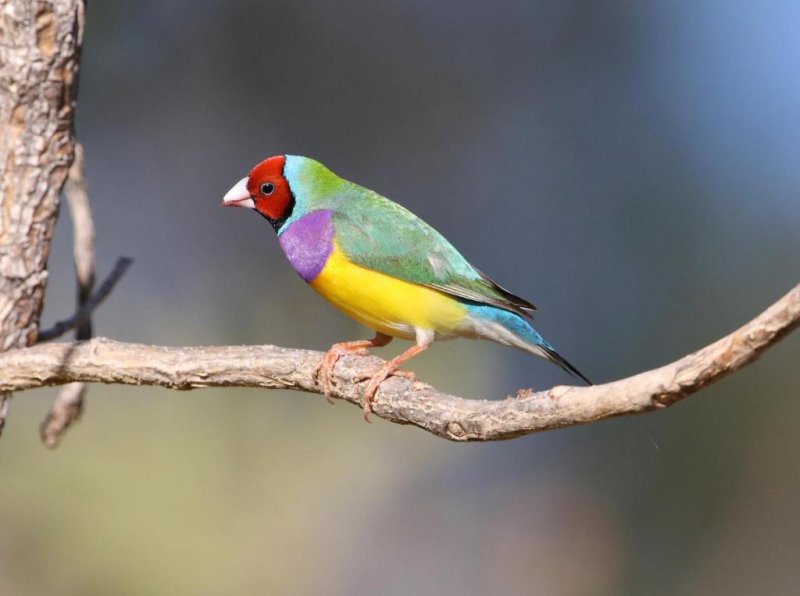While researchers say red-headed male finches are preferred by females, but researchers say that red is less common, which counterbalances the advantage of red forms of the bird. Photo by Marc Gardner
April 23 (UPI) -- The heads of Gouldian finches feature one of three different colors: yellow, red and black. Now, scientists know why the pressures of natural selection have failed to erase the species' color variation.
"Having distinct multiple color types -- a polymorphism -- maintained within a species for a long time is extremely rare," David Toews, who studied Gouldian finches as a postdoctoral researcher at the Cornell Lab of Ornithology, said in a news release.
Previous research suggests female Gouldian finches of all colors prefer red-headed males. According to the principle of natural selection, the idea that the most advantageous traits should come to dominate over time, all Gouldian finches should feature red heads.
"Natural selection is typically thought of in a linear fashion -- a mutation changes a trait which then confers some reproductive or survival advantage, which results in more offspring, and the trait eventually becomes the sole type in the population," said Toews, now a researcher at Pennsylvania State University.
But according to the latest study, published this week in the journal Nature Communications, there are other selection processes at work.
"We demonstrate that there is another evolutionary process -- balancing selection -- that has maintained the black or red head color over thousands of generations," said Kang-Wook Kim, a researcher at the University of Sheffield.
Researchers found red-headed finches enjoy an elevated social status, but the increased competition and pressure of life at the top of the hierarchy caused the red-headed birds to experience elevated levels of the stress hormone cortisol.
It turns out there is enough of a price to pay for the advantages of a red head that variation lives on.
"If advantages are cancelled out by concurrent disadvantages, these two color types can be maintained -- that's balancing selection," Toews said. "Red forms are not as common in the wild, so the counterbalancing pressure reduces the advantage of being red. That's super cool!"
Researchers at both Cornell and Sheffield universities isolated the gene responsible for regulating the color of red- and black-headed finches. The gene is in the same location within the sex chromosome as a gene controlling plumage coloration among North American blue-winged and golden-winged warblers.
"We didn't expect we'd locate the exact genomic region that governs plumage differences in both the Gouldian finch and the two warblers," said Toews. "But now that we've done it, it opens up the possibility that the same region in other species may also be controlling plumage color."
The gene responsible for yellow-headed Gouldian finches is different, and it is not located on the sex chromosome. Researchers aren't sure which evolutionary process has allowed the yellow-headed finch, a much rarer trait, to persist in the wild.















